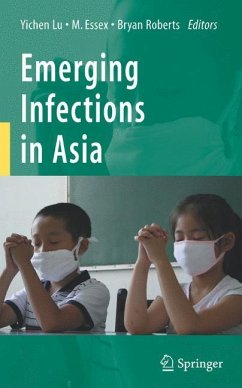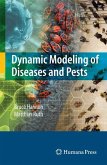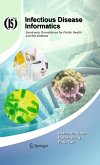The number of people who live in Asia is greater than the total number of people who live in the rest of the world. More than 160 cities in Asia have a population of at least one million people. Thus, when new infectious diseases threaten popu- tions in Asia, huge segments of the global population are at risk. At the same time, Asians are thoroughly integrated with the rest of the world, providing skilled exp- tise and becoming trading partners in all continents. Infectious diseases ordinarily show no preference for infection or disease according to race or ethnic background. A few exceptions exist, due to the host- pathogen evolution that happened before the recent era of rapid travel. Such exc- tions occur usually because the infectious agent was newly introduced to one population only after having existed and evolved for hundreds or thousands of years in a different population. As air travel became popular in the last few generations of people, it became increasingly difficultfor populations to remain in isolation. Thus, in 2003, SARS in China rapidly became SARS in Canada. Throughout history, a major source of new infections of people has been old infections of animals. For some, such as Ebola or Lassa, transmission to people is rare and self-limiting, though frighteningly lethal for the few unfortunate indivi- als who get infected. And Ebola and Lassa are indigenous for Africa, not Asia.
"Through recounts of lessons learned from the past coupled with up-to-date research data and current disease-fighting campaigns, this book acquaints readers with infectious diseases emerging out of Asia and threatening to be the next pandemic. ... Epidemiologists in the field, policy makers for national pandemic preparedness plans, and public health students in the classroom can benefit from this book. ... overall it provides a sound reference for the current status of infectious diseases in Asia." (Whitney S Baker, Doody's Review Service, August, 2008)
"Emerging infections in Asia provides an informative overview of several key public health challenges facing the world's most densely populated areas. A thoughtful approach to infection control and prevention is the foundation of this well written and instructive volume. [It] not only details specific infections but improves the reader's understanding of the unique interplay among individuals, animals, and travelers in settings with limited environmental and monetary resources.... The level of detail is sophisticated but still accessible, even to the nonmedical reader. If nothing else, the 2 chapters on avian influenza offer one of the most thoughtful yet succinct commentaries written about this potential pandemic. By recording the past and looking to the future, the contributors of Emerging Infections in Asia remind readers that when it comes to infectious diseases, the world will continue to get smaller." (Preeti N. Malani, MD, MSJ, JAMA 301:4, Janurary 2009)
"Emerging infections in Asia provides an informative overview of several key public health challenges facing the world's most densely populated areas. A thoughtful approach to infection control and prevention is the foundation of this well written and instructive volume. [It] not only details specific infections but improves the reader's understanding of the unique interplay among individuals, animals, and travelers in settings with limited environmental and monetary resources.... The level of detail is sophisticated but still accessible, even to the nonmedical reader. If nothing else, the 2 chapters on avian influenza offer one of the most thoughtful yet succinct commentaries written about this potential pandemic. By recording the past and looking to the future, the contributors of Emerging Infections in Asia remind readers that when it comes to infectious diseases, the world will continue to get smaller." (Preeti N. Malani, MD, MSJ, JAMA 301:4, Janurary 2009)








